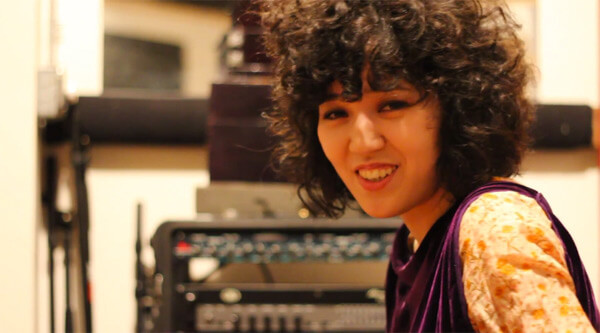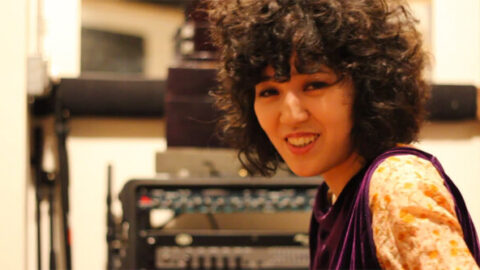 Violinist Aisha Orazbayeva presented a compelling programme of contemporary violin works on April 23 at Kings Place, London. It was great to hear her live after reviewing her recording for Nonclassical which showed her to be a violinist of strong interpretative abilities and tonal control. Such skills permit a breadth of expression for repertoire that needs strong leadership from the performer to make it a convincing experience for the listener. The recording made a strong impression and her live performance did not disappoint.
Violinist Aisha Orazbayeva presented a compelling programme of contemporary violin works on April 23 at Kings Place, London. It was great to hear her live after reviewing her recording for Nonclassical which showed her to be a violinist of strong interpretative abilities and tonal control. Such skills permit a breadth of expression for repertoire that needs strong leadership from the performer to make it a convincing experience for the listener. The recording made a strong impression and her live performance did not disappoint.

The Kazak born Orazbayeva had a seemingly full audience in Hall Two to hear her programme of Lachenmann, Feldman, Boulez and Nono. The short first half of just twenty minutes was a sensible choice to enable fresh ears to experience the Nono that filled the second half. Helmut Lachenmann’s Toccatina for violin solo (1986) made a good opening: delicate and finely control timbres were delivered with real skill, precision, and a strong sense of direction. Lachenmann’s penchant for exploring unconventional sounds free from electronic manipulation was ever present here, particularly with the use of the screw of the bow to create sounds that encouraged increasingly focussed listening as the work progressed. Perhaps the audience were so mesmerised by the subtleties and quiet playing that no one thought to clap. For Aaron Copland (1981) by Morton Feldman made a well planned contrast with the muted quiet notes repeated with Feldman’s hypnotic technique and performed with necessary focus and conviction by Orazbayeva. Antheme I (1991, Pierre Boulez) ended this short first half well. Aisha managed the virtuosity of the work with quiet flair, capturing a range of sound in a performance that was convincing throughout. Her playing was never over-stated, and it is this covert virtuosity and efficiency that make her an ideal exponent of this repertoire.
Listen to Aisha perform For Aaron Copland at Mirrortone Studios, NY
Luigi Nono’s La Lontananza Nostalgica Utopica Futura for solo violin and 8 magnetic tapes (1988) showed how brave and willing Orazbayeva is tackle works that are not only complex technically for the player but ones that demand an approach that considers the performance of a long work (performances ranging from 45 minutes to an hour) such as this with real rigour. This work was written for the violinist Gidon Kremer who premiered it in 1988. It involves eight stands scattered around the performance space, and the performer makes their own journey between the stands. A dark Hall Two at Kings Place made this something like seeing The Woman in Black in the theatre – one was never quite sure where Orazbayeva was playing, or even if it was her or the tapes as her sound blended well with the recorded material. The tape, recordings of Kremer’s playing, had been subjected to manipulation through the use of effects including reverb, filters and delays which created an engaging sound world for much of this piece: episodes of real fragility with high harmonics sometimes barely audible contrasted by moments of harsher sounds and more vigorous playing. The most beautiful moments were when Orazbayeva’s playing seemed to emerge from the recordings, sensitively controlled and often wonderfully quiet harmonics. The electronics were performed with superb skill throughout by Peiman Khosravi, who demonstrated a real understanding of the space to accentuate the delicate sounds while not making the louder moments too harsh. The ending was superb, her final note seemingly sustained by an imaginary player as she walked off the platform.
Aisha Orazybayeva is an unassuming player that demands attention for her imaginative programming, playing that makes seemingly complex repertoire engaging and technique that captures real detail and vitality in all that she played.
—
Steven Berryman is a composer and teacher working and living in London. Follow him on Twitter: @Steven_Berryman
























